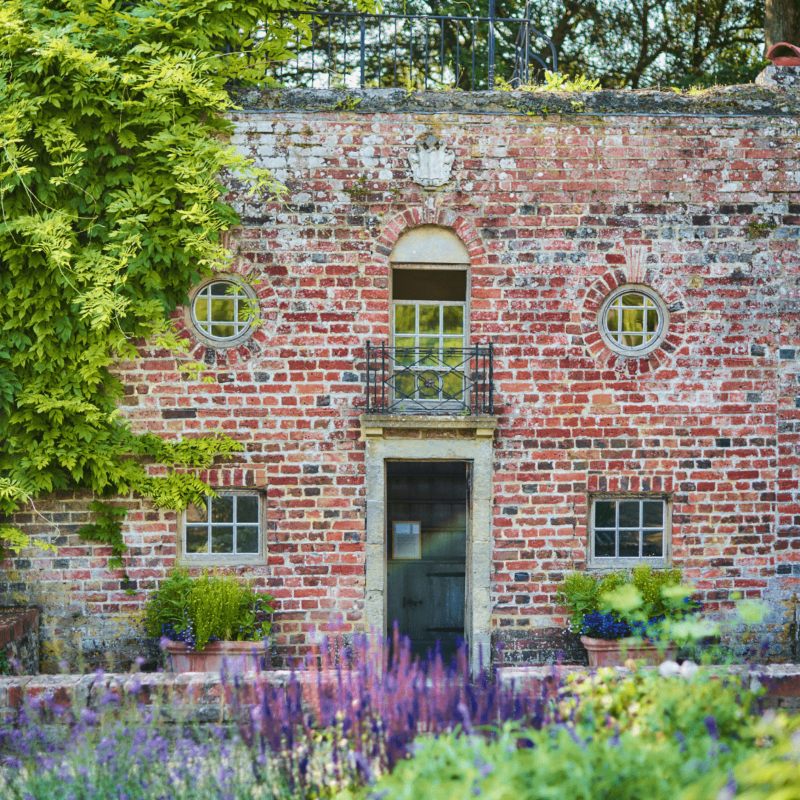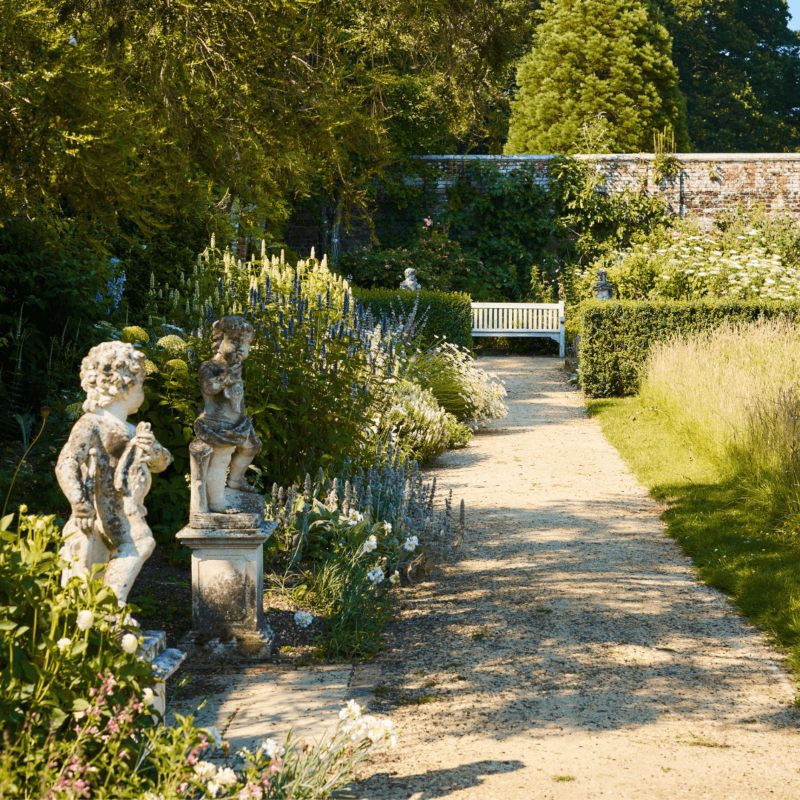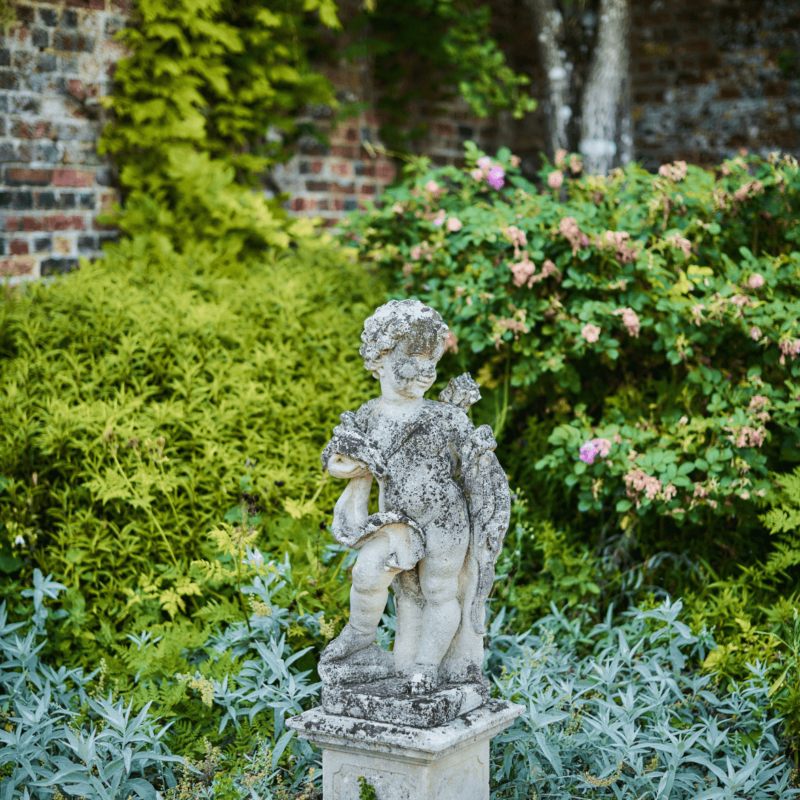Tourist header template
- Home
arrow_drop_down
- What’s On
arrow_drop_down
- Where To Stay
arrow_drop_down
- Things To Do
arrow_drop_down
- Eat & Drink
arrow_drop_down
- Shopping
arrow_drop_down
- Plan Your Visit
arrow_drop_down
- Local Businesses
arrow_drop_down
- Business Support
arrow_drop_down
- Local Directory
arrow_drop_down
- Estate & Lettings Agents & Architects
- Health, Beauty & Wellbeing
- Home & Gardening Services
- Photographers, Fashion & Lifestyle
- Retirement, Care & Funeral Services
- Travel, Holidays & Languages
- Tradesman, Builders and Property Services
- Vehicle Repairs, Storage, Hire & Taxi Services
- Weddings, Events & Entertainment
- Business Support
West Sussex Parks and Gardens
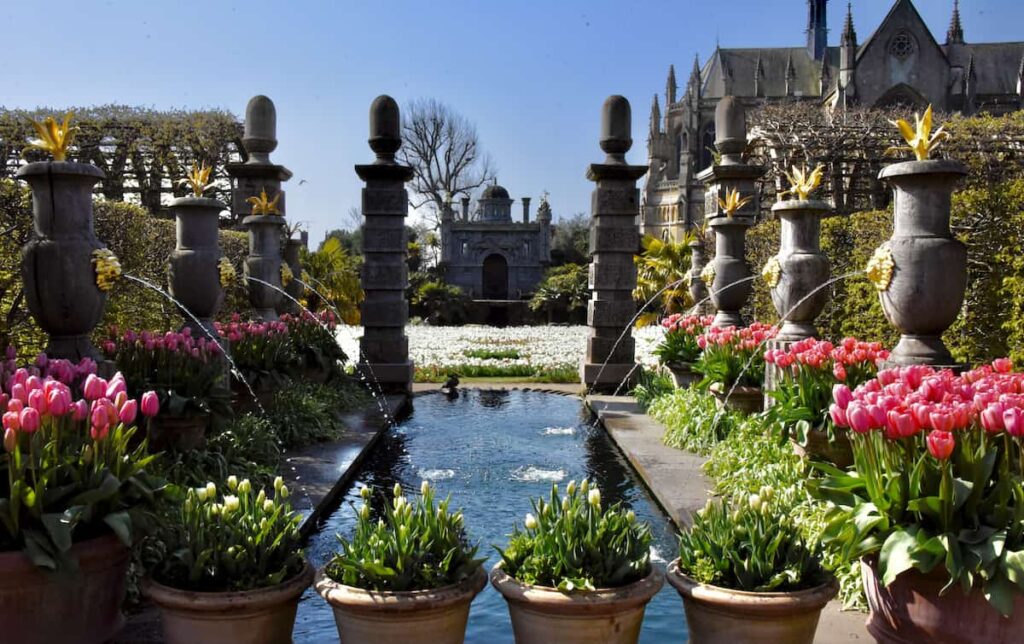
With so many beautiful gardens and parks to visit in West Sussex, how do you choose?
Read on for our insider’s guide to the finest, most spectacular – and quirkiest! – West Sussex parks and gardens.
From floating golden crowns and free-roaming wallabies to trees that grow hankies and metre-long wisteria, our roundup includes six of the best parks and gardens in West Sussex.
Arundel Castle Gardens
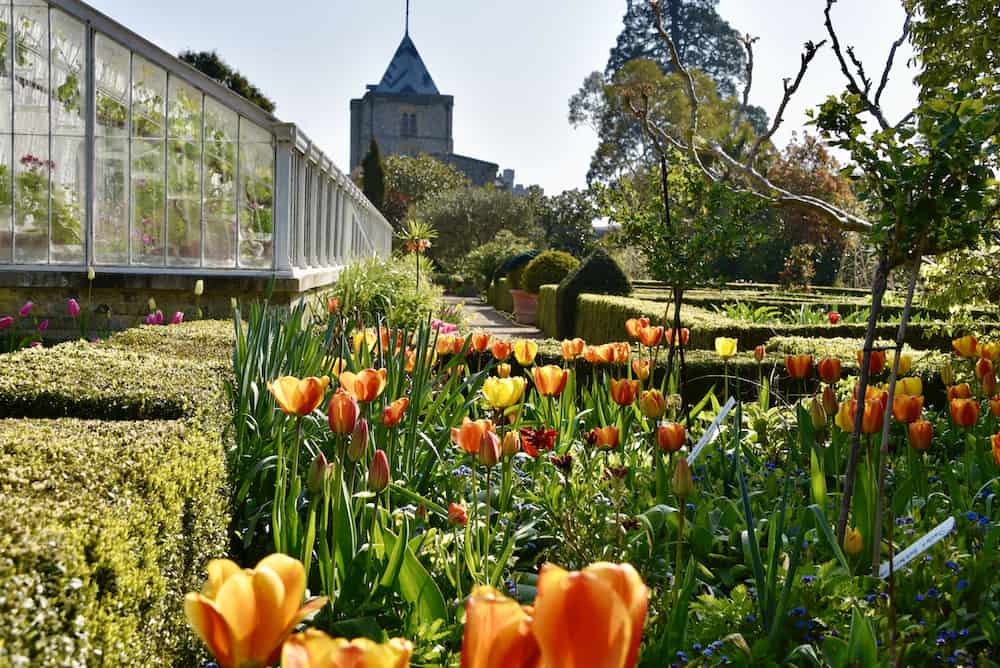
Photo: Charlie Waring
Prince Charles perfectly captured the magic of Arundel Castle Gardens when he opened them in May 2008. Having flown in by helicopter for the ceremony, the Prince of Wales remarked that these gardens are “an example of what used to be a car park transformed into something of enormous beauty, attraction and timelessness”.
Yes, that’s right, the world-famous Collector Earl’s Garden used to be a car park. In the heart of Arundel town centre and with stunning views of Arundel Castle and Cathedral, the gardens now attract visitors from around the globe.
Named after the 14th Earl, an avid art collector, these award-winning tropical and English gardens have surprises for you to discover around every corner.
Have you ever seen a stumpery before? Think ‘rockery’ but made from stumps and logs – it’s a five-star hotel for wildlife. The garden team at Arundel Castle favour an organic, eco-friendly approach which means happy bees and insects.
Please be warned: walking around the Arundel Castle Kitchen Garden can result in serious greenhouse envy. Inside the giant greenhouses, sheltered from the elements, chillies, grapes, and lemons grow.
As you continue your discovery of the Arundel Castle Gardens, immerse yourself in the fragrant heaven of the beautifully laid out Rose Garden, enjoy a tranquil moment in the Fitzalan Chapel’s White Garden.
If you are a tulip lover, don’t miss April’s Tulip Festival. When the tulips fade, May’s Allium Extravaganza bursts into life.
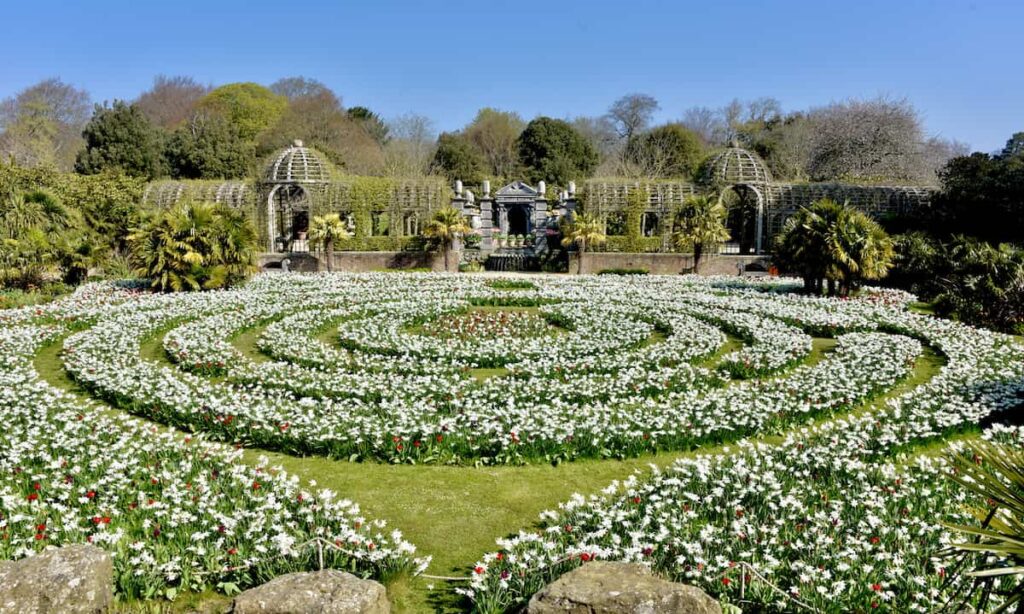
Photo: Charlie Waring
You can enjoy my favourite place in the Arundel Castle Gardens throughout the castle’s opening season. Head to Oberon’s Palace and marvel at the interior, decorated with thousands of seashells. Then the crowning glory… a regal gold crown. Wait a minute! Is that crown floating? Why, yes, it is! Supported by a single jet of water, the crown revolves in mid-air before your eyes. Well, Oberon was the King of the Fairies in Shakespeare’s Midsummer Night’s Dream. And he certainly works his magic here!
Highdown Gardens
High on the Sussex Downs, with views out to sea, Highdown Gardens attract walkers, garden lovers and people looking for a perfect picnic spot. This council owned garden has just undergone a £1M redevelopment and have added a sensory garden and new visitor centre.
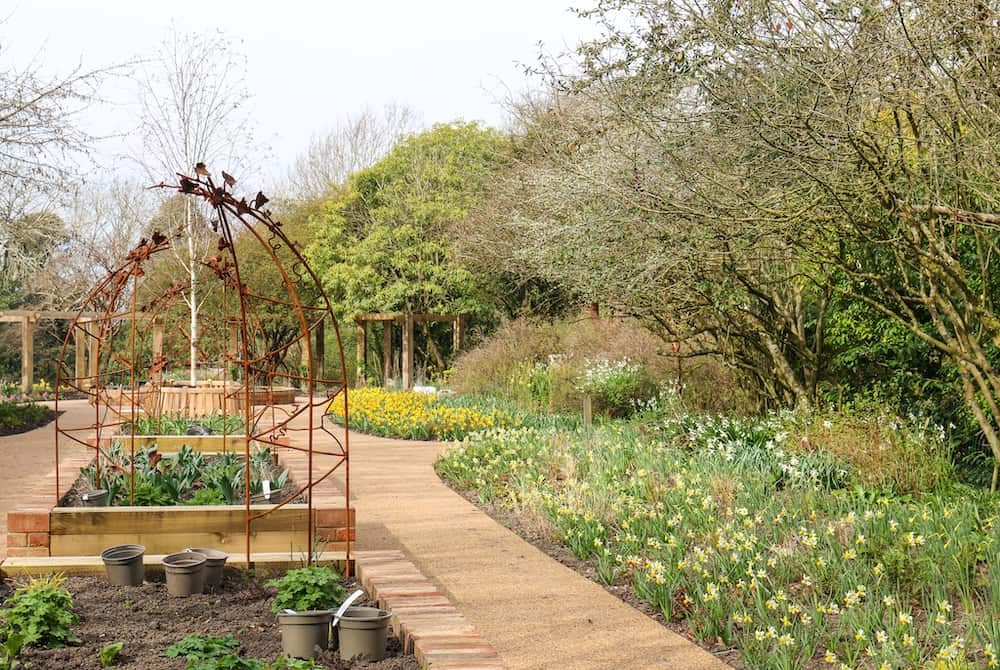
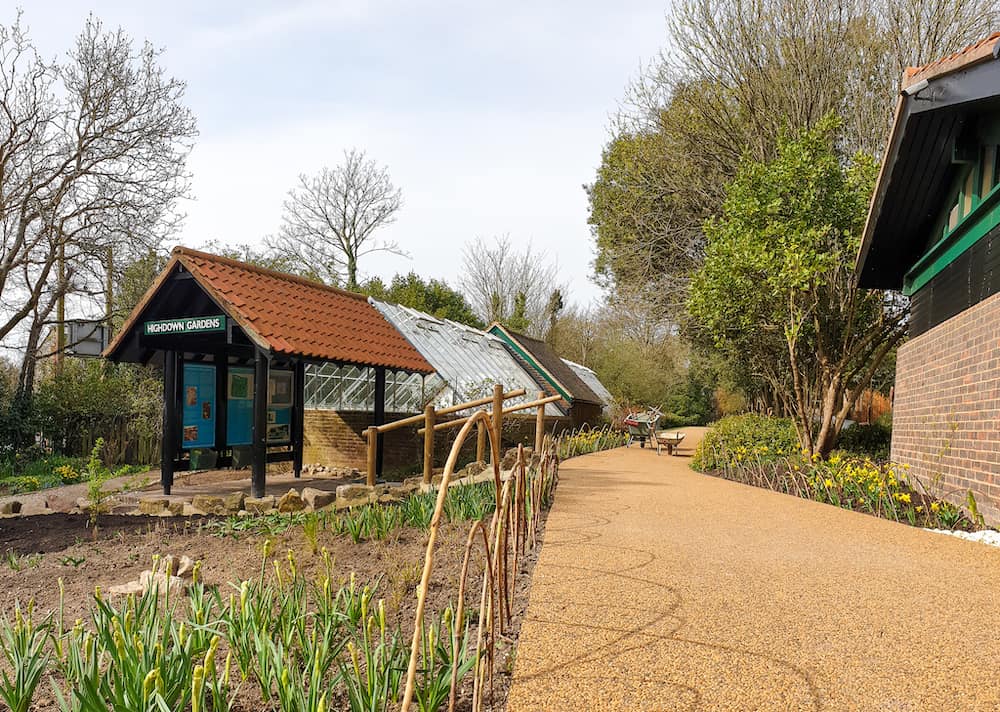
Photo: Highdown Gardens
These 8.5-acre gardens, on the western edge of Worthing close to Ferring, were created from an old chalk pit by Sir Frederick and Lady Stern. It took this determined couple 50 years to prove that plants would grow on chalk. And my goodness, they most certainly do!
Despite a distinct lack of deep soil and highly unfavourable growing conditions, the Sterns created a garden planted with rare and beautiful plants which genuinely thrive in the uncompromising surrounds of an old Sussex chalk pit.
If you visit Highdown during the late spring, you will see two favourites of mine. Firstly, the handkerchief tree, with its floppy white flowers. You will wish you could pick one of the delicate petals to wipe away a tear – or even blow your nose!
Then, the Judas tree – a tree with a story to tell. According to legend, Christ’s betrayer Judas Iscariot hanged himself from a Judas tree, and as he did, the tree’s white flowers turned red to show the tree’s shame. Whatever you may believe, in full bloom, the Judas tree’s deep pink flowers are a sight to behold.
You can still see original plants from the early collections in the gardens today. In early summer, you can enjoy an incredible display of peonies and bearded irises.
Pause to drink in the beauty by one of the garden’s two ponds. The restful Cave Pond is home to a collection of Koi carp and golden orfe fish. The Bamboo Pond is teeming with wildlife for you to watch, including frogs, newts, toads, damselfly, dragonfly. A grass snake was even seen swimming here once. Can you see one today?
Denmans Garden
The shingle paths that meander through Denmans Garden lead you through four acres to discover a vast diversity of plants that offer year-round interest and colour.
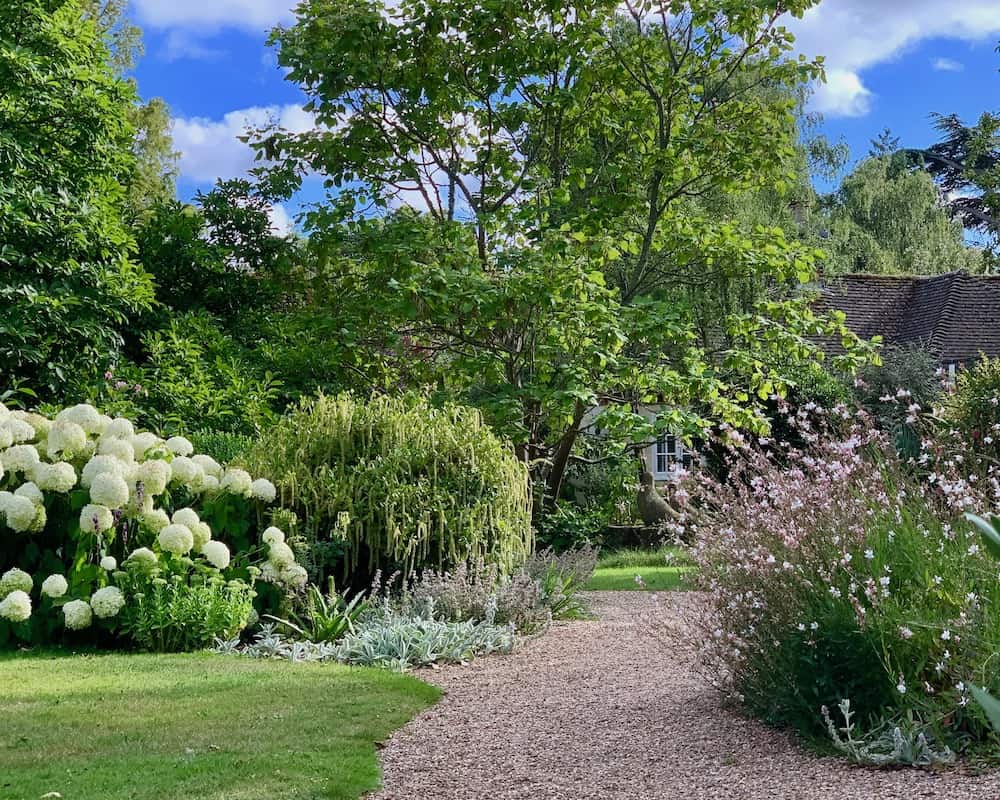
Photo: Denmans Garden
Just six miles from Arundel, this contemporary country garden, next to Fontwell Racecourse, is home to plants from warm climates such as the Mediterranean, and native West Sussex species. Created by the influential late landscape designer John Brooke MBE, who pioneered relaxed, natural planting, Denmans also features faux dry riverbeds with planting around stone, shingle, flint and pebbles.
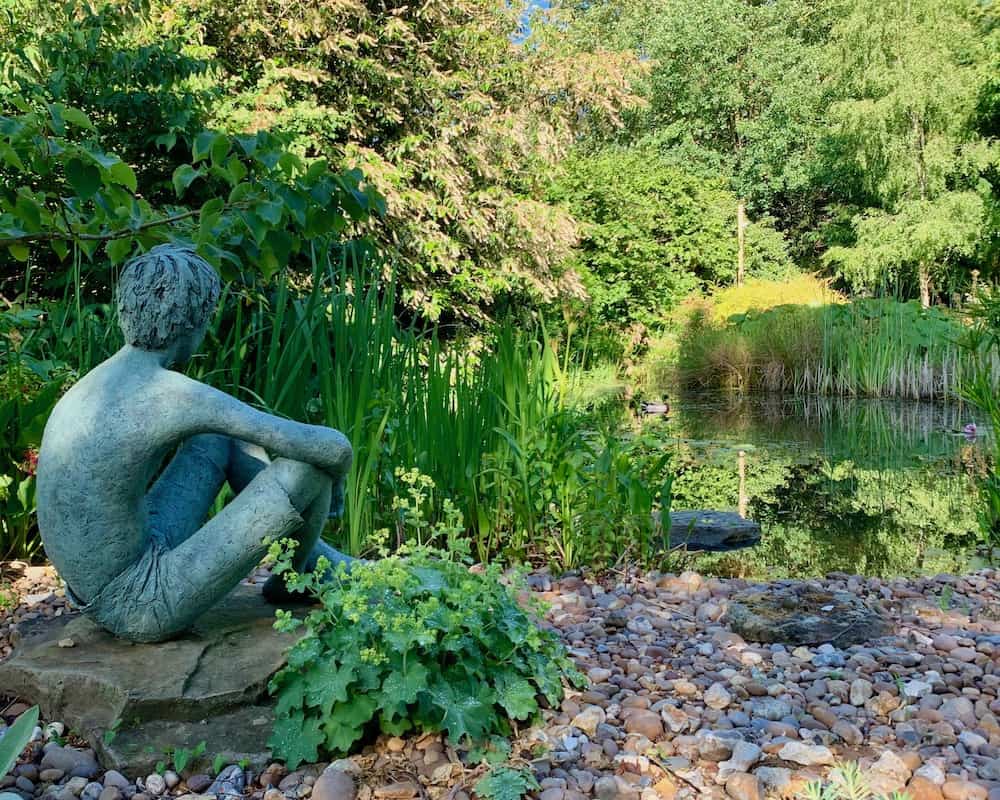
Photo: Denmans Garden
Denmans Garden is dotted with quiet spots where you can sit and ponder. At the two ponds, keep a lookout for dragonflies. And don’t forget to visit Denman’s Plant Centre before you leave. You can always find unusual plants to buy, many of which are propagated on site.
Parham House & Gardens
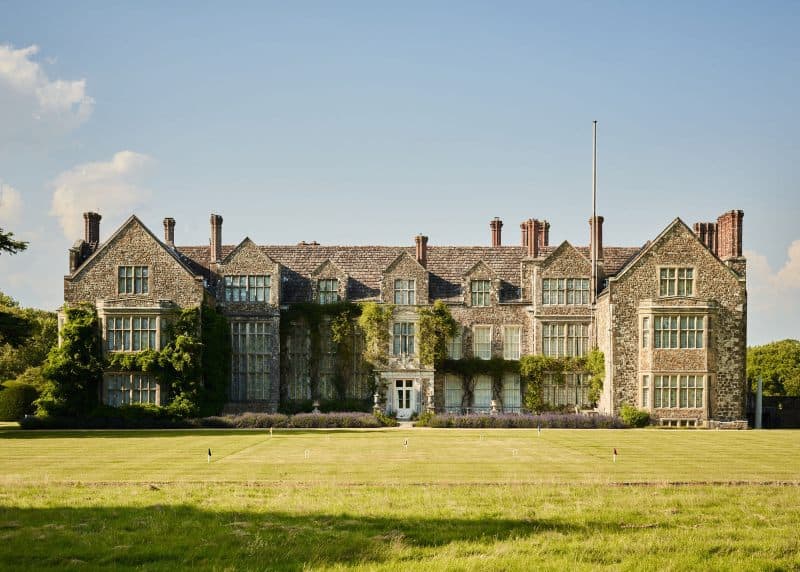
Parham House & Gardens, with its lovely Walled Garden and Pleasure Grounds has been open to visitors since 1948, simply because the family wanted to share it with others.
It is a cherished family home and has been since its foundation was first laid during the reign of Queen Elizabeth I in 1577. The family honour the generous ethos and traditions of their ancestors and of all those in the past who have shaped this very special place.
You can walk around the beautiful Pleasure Grounds and Walled Garden and soak up the special Parham tranquillity and beauty that have changed very little over the centuries.
The Pleasure Grounds at Parham were laid out by Sir Cecil Bisshopp (1753-1828) and consist of seven acres. The area has had many guises over the years; numerous curved paths, flower beds and shrubberies were put in a removed. And at one point it even contained a rockery and tennis courts.
Today everything is kept deliberately simple; it is laid out in the 18th century, with a lake, spring bulbs, a brick and turf maze and many specimen trees. In the Spring, you’ll see a beautiful sea of snowdrops, daffodils and other wild flowers.
The Walled Garden pre-dates the House, and it is likely that the land has been cultivated since the 14th century. The walls date from the 18th century, and the garden is laid out in the traditional manner by crossed paths that divide it into four.
The old four-acre Walled Garden contains romantic wide herbaceous borders, a rose garden, a cut flower garden, a vegetable garden, an orchard and a 1920s Wendy House. A splendid Greenhouse, also dating from the 1920s, has a fine display of pelargoniums and other tender plants.
West Dean
There have been gardens at West Dean since 1622. Today, you can walk around beautifully restored walled gardens and Victorian glasshouses, imagining how people centuries before enjoyed this special place, set against a backdrop of the South Downs.
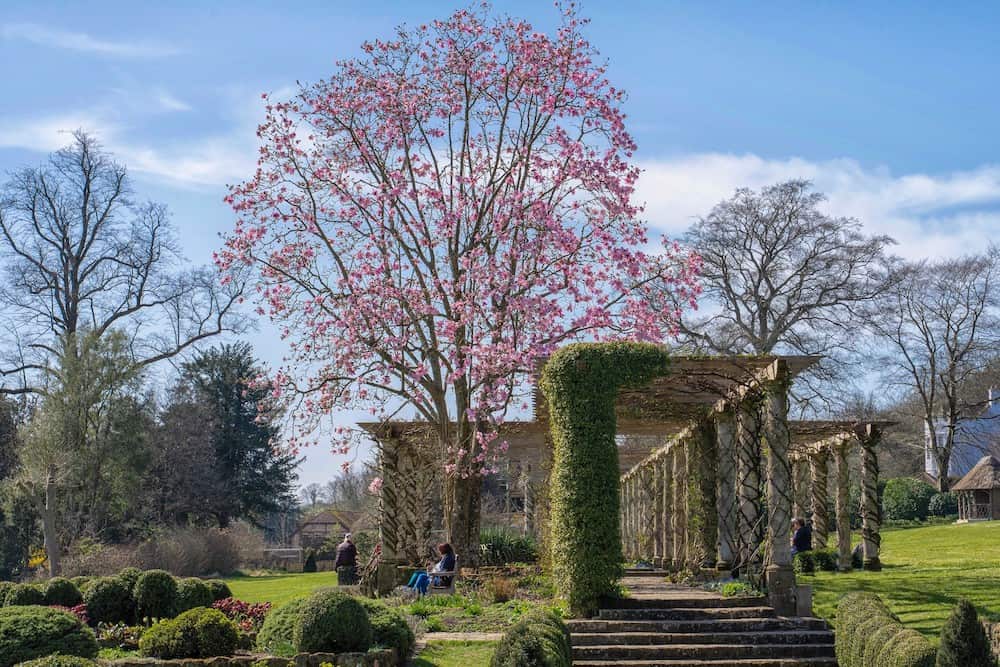
Photo: West Dean
Just five miles north of Chichester, you are transported to another time, a time of secret walkway bridges and walled gardens with hidden-away benches. When you walk under the 330-foot Edwardian pergola, you can inhale the scent of honeysuckle and roses and drink in the views of open, wild space stretching as far as your eyes can see. Where will you picnic?
Look out for the two surreal fibreglass trees. These were created from old trees that had to be felled. The timber left standing was encapsulated in fibreglass. As the wood rotted away, it left surrealist tree sculptures of fibreglass shells.
In the Orchard, you can see more than 100 varieties of apples and 45 pear varieties trained into fantastic shapes.
The River Lavant runs through West Dean gardens. Although it can flow quickly, it is more of a brook than a raging river. Known as a ‘winterbourne’ stream, it is usually dry through the summer. Often a winterbourne will form in areas where there is chalk downland along a clay valley. When it rains, the porous chalk holds water underground, releasing it at a steady rate to create a stream. Without rain, the water table falls below the stream level – and the stream dries out.
The garden dens and bug hotel at West Dean Gardens delight young minds – and big kids too!
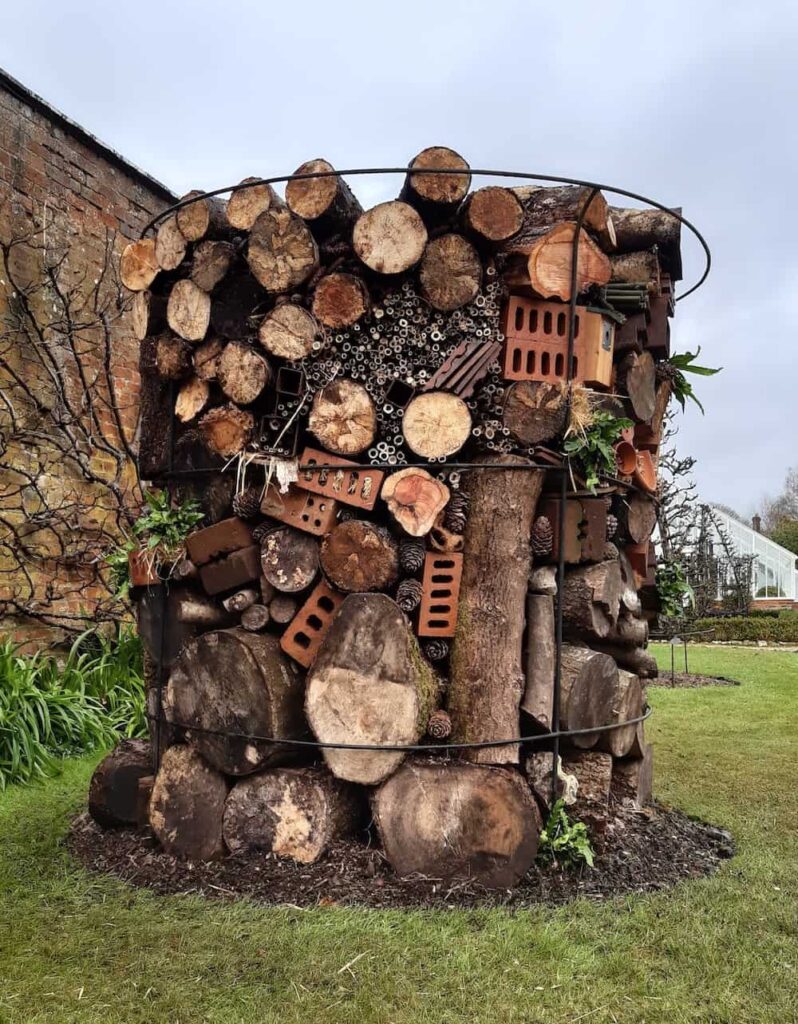
Photo: West Dean
Leonardslee Lakes And Gardens
We are lucky to be able to enjoy Leonardslee Lakes and Gardens. When this Grade 1 listed garden reopened in 2019, after the most extensive garden restoration in England, the gardens had been closed for 10 years. Their splendour was nearly lost forever.
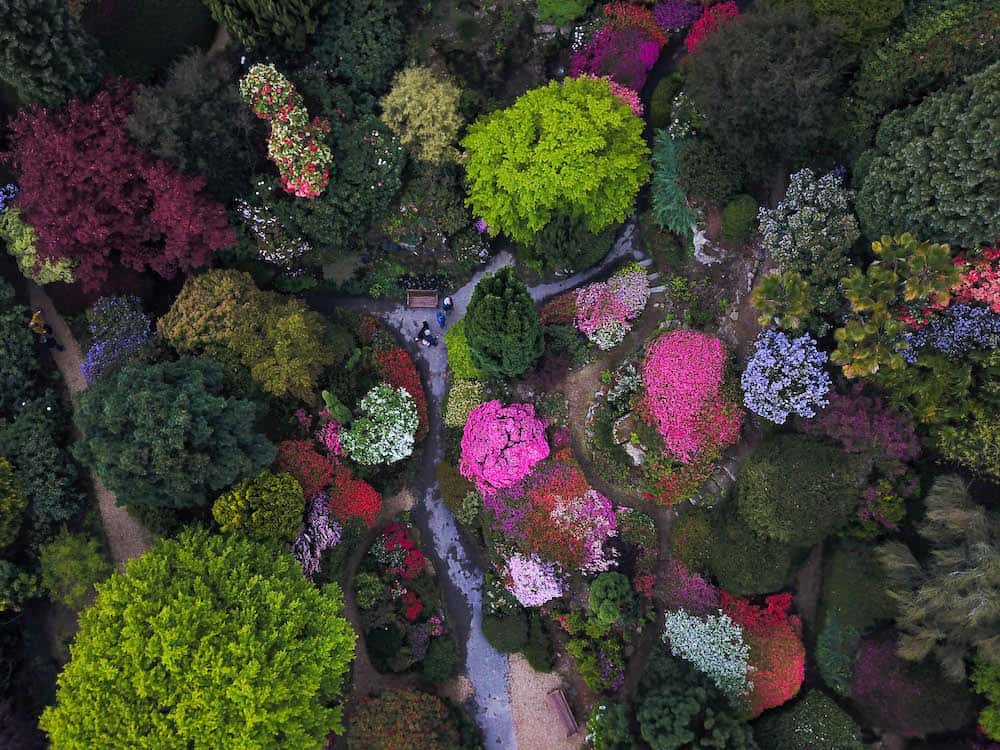
Photo: Leonardslee
This makes a visit to Leonardslee Lakes and Gardens even more special.
And where else in West Sussex can you see wallabies roam free?
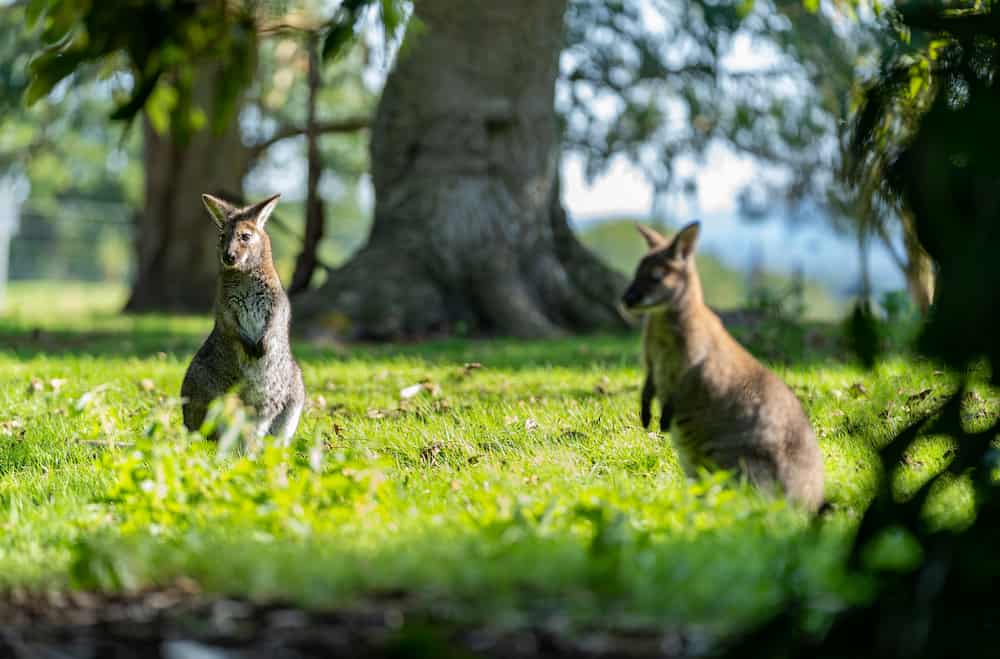
Photo: Leonardslee
Leonardslee Lakes and Gardens, in Lower Beeding near Horsham, are famous for their azaleas, bluebells, camellias, magnolias, and rhododendrons. In the Dell, there is a magnificent, 35-foot high, Cornish red rhododendron planted in the 1800s.
You can choose from a wide selection of walks that meander through the 240 acres of woodland and a Victorian ornamental rock garden with palm trees, ferns and alpine plants.
The seven lakes and extensive woodland attract wildlife in abundance. If you’re lucky, you can see herons in the lake shallows, carp flickering under the water, kingfishers hoping to catch small fish, wild mandarin ducks, foxes, badgers, weasels, stoats, deer and, of course, the famous wallabies, who were introduced to Leonardslee in 1889. Did you know that as well as hopping, wallabies can also crawl and swim? Don’t worry about the wallabies staying warm in our northern hemisphere winters – they grow a thick coat to keep them toasty.
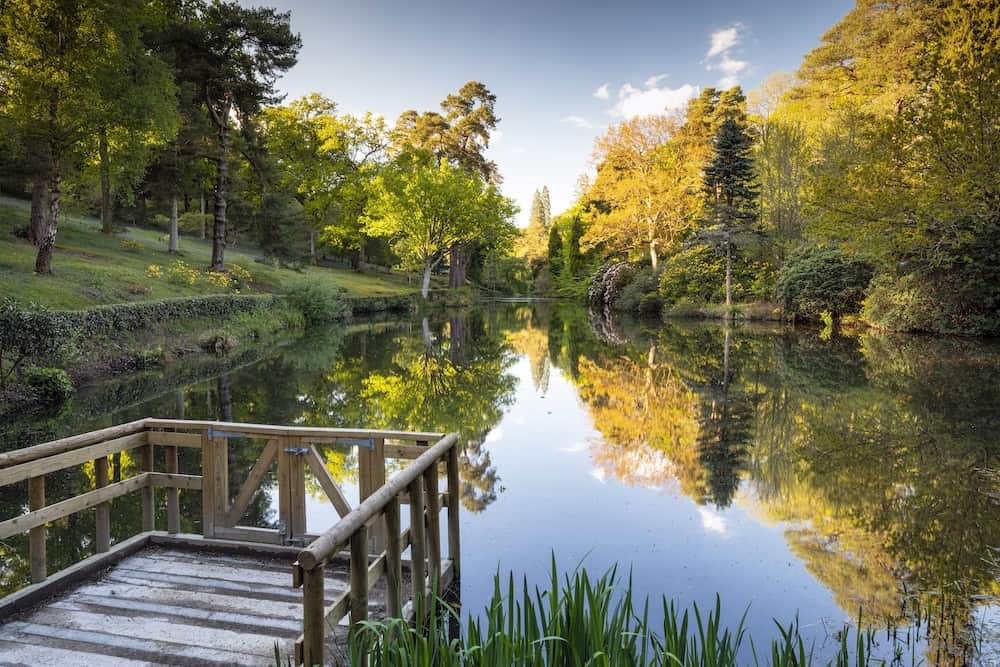
Photo: Leonardslee
Leonardslee has something else which children (and adults!) will love – a Dolls’ House Museum. Created on a 1:12 scale, which means a 6ft person will be 6” tall in this display, the museum shows a magical miniature world with characters busy shopping, working, painting and gardening.
For grown-ups only, Leonardslee is also home to England’s first Pinotage vineyard, and wine tasting is available seven days a week.
Nymans
Do you know that wisteria twine clockwise or anti-clockwise depending on the species? You can see wisteria from China, Japan and the eastern United States at Nymans, a Grade II listed National Trust garden.
With twisted stems and long cascading blooms, magnificent wisteria are all around Nymans – some up to one metre long! One wisteria is more than 100 years old. Although hardy, wisteria doesn’t like severe cold weather. Who does? And, like many of us, will be happiest in a sunny position.
In late May and early June, when the sun shines, you can even smell the sweet scent of these beautiful wisteria blooms but do not eat the seeds – they are poisonous!
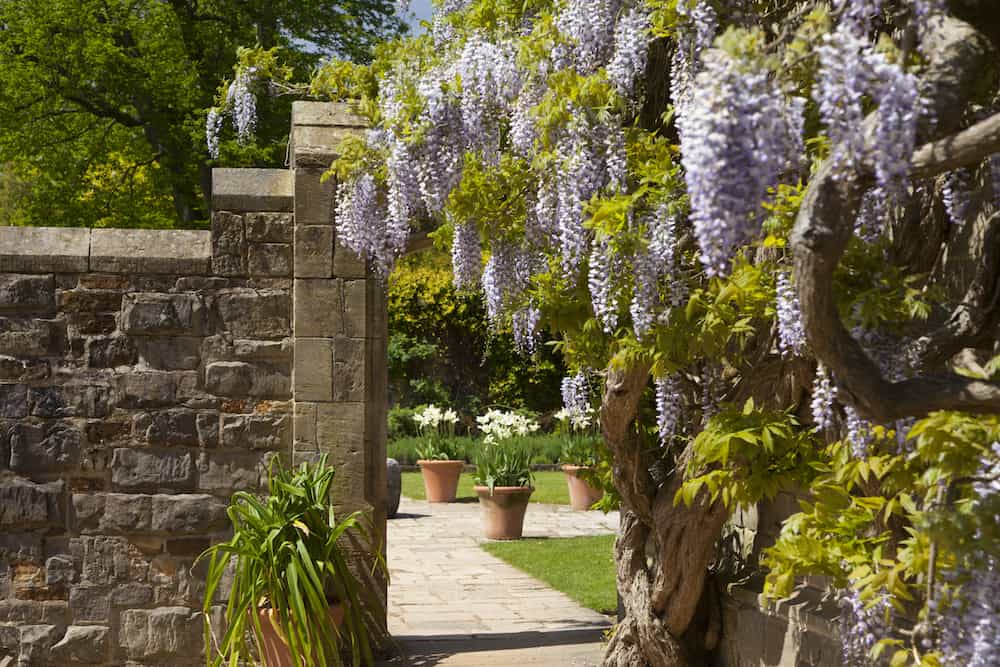
Photo: National Trust Images/John Miller
Nymans, east of the village of Handcross near Haywards Heath in West Sussex, is set high on the Sussex Weald. The gardens are laid out around a beautiful old house and ruins. The Walled Garden is well known for its blossom trees, camellias, spring bulbs and features plants from China and Chile.
One of the most eye-catching plants is the Snakes Head Fritillary, which flowers in April, with chequerboard-patterned blooms that look like coiled snakes’ heads.
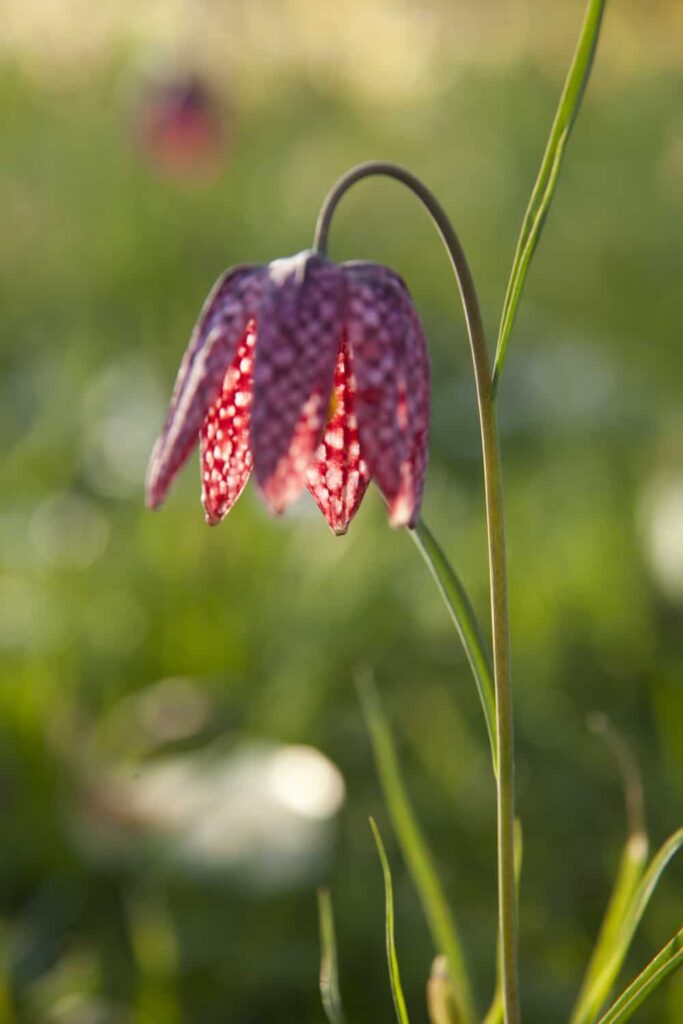
Photo: National Trust Images/John Miller
In late spring, rhododendrons and magnolias burst into colour at Nymans, and the whole garden has many exotic species to see from all over the world, which makes it a special place to visit all year round.
Borde Hill Gardens
Borde Hill Gardens, 1.5 miles north of Haywards Heath in West Sussex, are a masterclass in garden design. The gardens are laid out as linked ‘garden rooms’, each with its own character. At the heart of the estate is the Elizabethan House, built in 1598.
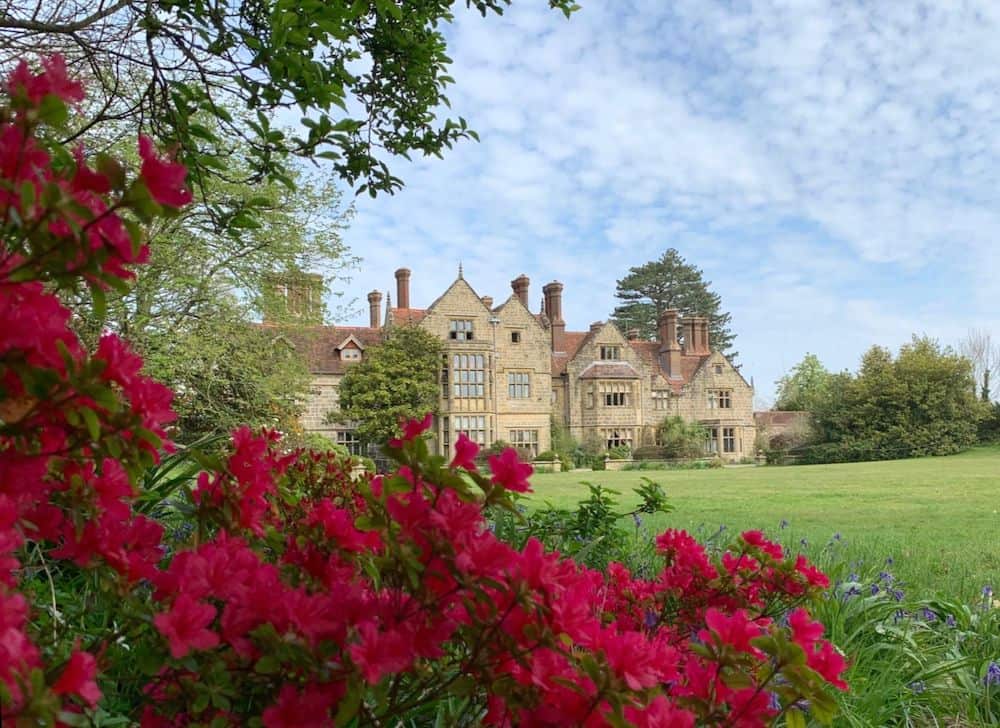
Photo: Borde Hill Gardens
You can explore 200 acres of garden, park and woodlands with spectacular views across the Sussex High Weald. Stroll through rose gardens and sub-tropical dells with palm trees – and even bananas. Get inspiration for your own garden, however small, from the herbaceous borders and Borde Hill’s collection of shrubs and trees from around the world.
Many of the seeds used to create the gardens you see today were collected during the Great Plant Hunters’ expeditions from 1893 to 1937.
At the end of the 19th century, a team of 27 full-time gardeners worked at Borde Hill, growing fruit and vegetables for the house. They also propagated plants from seeds and cuttings in the potting sheds at the heart of a working garden.
You can still see the remaining walls of these buildings in the garden, where they are used to shelter tender plants from warmer climates such as Chile and South Africa. Can you see the small rooms in the corners? One contains a stone table that was a millstone used to grind wheat, and the other one has a trough containing plants from New Zealand.
There are lots of perfect picnic spots at Borde Hill. And you can work off lunch in the Adventure Playground, which has a zip wire for the most adventurous among you!
Written by Barb Hogan, Visit Arundel
|
|
Thank you for Signing Up |


